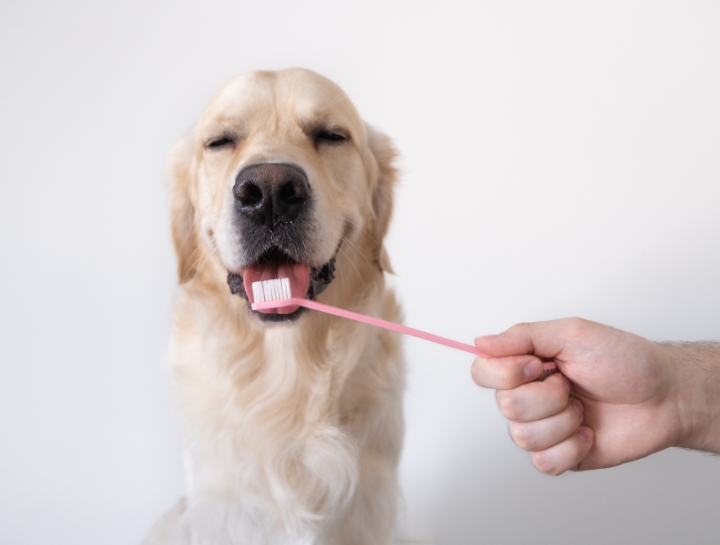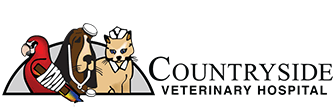Canine Dental Care
Teeth brushing is incredibly important for the whole body health of your new puppy as well as for you! Yes for years dogs went without teeth brushing, oral cleanings, and dental disease, but so did humans. Our mouths just like our four-legged friends suffered for it. Severe gum disease, tooth loss, chronic sharp pain, and bad breath resulted! Today pets are living longer, healthier lives so deserve preventative and maintenance dental care.
Why starting early is so crucial you may ask. Well because 80% of dogs have periodontal (gum and tartar build-up) by 3 years of age if no dental hygiene is started!
We are fortunate to live in an age where there are many products that are approved by the Veterinary Oral Health Council.
First, you need to know what a normal dentition should look like then we can get into ways to keep your pup's mouth looking pristine. The teeth should be clean, white, and free of any chips or fractures. The gums shouldn’t have any sores or lesions and should be pink and healthy without any redness, swelling, ulcers, or bleeding. Your puppy’s breath shouldn’t have a bad odor. Halitosis or bad breath is a sign of infection and warrants a veterinary visit for a checkup.
So now that you know what normal looks like, you ask, “What can you do to prevent dental disease?” The answer is A LOT starting with daily teeth brushing, specific veterinary prescription dental foods as well as VOHC-approved dental treats.
BRUSHING
This is most important!!! Did you know that plaque can turn into tartar within about 36 hours... so regular brushing IS important as your pup grows up.
- Options include a soft toothbrush and pet-specific toothpaste or oral wipes.
- Training - first we need to get the puppy used to having his/her mouth handled. I recommend rubbing your finger along the muzzle daily followed by positive praise and a reward daily for 1 week.
- The second week- again no toothbrush you are going to rub your finger along the upper gums (under the lip) with his/her mouth closed. Don’t try and open his/her mouth to brush as that will lead to bites!
- Week three - the toothbrush finally comes out! Gentle brush the outside fur on the muzzle and like in the past two weeks follow with positive praise and a treat.
- Week four - Gentle brush the gums without toothpaste and follow with positive praise and a treat.
- Week five - you are almost there! This week apply a small amount of toothpaste to the brush and let him/her taste it. Yum! Then go about your daily brushing, praising your pup the whole time.
Puppies love a routine so practicing this every day at the same time can train your pup to expect this fun daily activity. I recommend brushing their teeth before a meal and then following the session with breakfast. This will get you and your pup into the routine of daily teeth brushing before breakfast.
If a toothbrush is not working I highly recommend trying MaxiGuard dental wipes which you released around your finger and then rub the teeth. These are less cumbersome than a toothbrush. I recommend training your puppy to get used to these slowly over multiple weeks just like with the toothbrush protocol described above.
DIET
There are veterinary-approved diets for adult dogs to keep their teeth healthy the most well-known is Hill’s t/d. This should be the only diet fed to get healthy dentition! This diet is only approved for adult dogs so if interested plan to start around 1 year of age.
TEETHING PUPPY
The period between 3 months and 7 months is when your puppy is teething, and this can be a challenge for him/her (and you). Teething can cause discomfort or even pain, and the desire to chew and bite is at its peak. During this time your puppy will have the compulsion to chew on everything in sight including hands and toes.
It’s important to be very consistent about discouraging your puppy from chewing or biting on things that he/she shouldn't and re-directing his/her attention back to his/her own belongings. Although puppy biting is normal, and has an important role to play in development, all puppies need to learn that they are not allowed to nip, mouth, or bite humans - ever.
WHAT ARE SAFE CHEW CHOICES FOR DOGS?
What are the best and safest items to allow your furry friend to gnaw on?
1. Edible Chews and Treats — VeggieDent®, Greenies®, and other chew treats are generally safe for your pet, however, they do not last very long. They can, however, improve your dog’s dental and oral health by minimizing or slowing the accumulation of tartar or plaque on the teeth.
2. Rubber Chew Toys – Toys such as Kong®, made out of firm rubber, are the safest bet when it comes to canine chew toys. They last a long time, and can stand up to dedicated chewing, yet protect the teeth. Additionally, many have pockets to add treats to, providing added mental stimulation.
3. VOHC-Approved Products - Although not all safe products have VOHC approval, using products with the VOHC seal of acceptance is recommended as these products have successfully met pre-set requirements for veterinary dental efficacy. A complete list of VOHC-approved products can be accessed here >>
BAD CHEW TOY OPTIONS FOR DOGS
There are a variety of unsafe objects many dog owners allow their pets to stay busy with. However, each of them poses specific health hazards to your best friend. Just because they haven’t suffered an injury yet does not mean they are safe for your dog. Here are chew toys to avoid:
1. Ice. While these frosty chunks seem like a smart choice, especially when hot summer months hit, regularly allowing your dog to chew ice can wear down their tooth enamel and can even fracture or break smaller breed’s teeth.
2. Rocks. Many bored dogs have found playing with rocks and stones to be a fun way to pass the time. They can chip and break teeth. If swallowed they also pose a life-threatening emergency as a foreign body.
3. Bones. Many dog owners think because they are “natural”, bones are a good chew toy choice. The issue is that bones can be broken and splintered, and the shards swallowed. The fragments can become lodged in the mouth, throat, and intestines. Chicken bones, as they’re a prime cause of choking. Yak milk bones are also a no-no as they are even harder than bones and easily fracture dog's teeth.
4. Water bottles. Many dogs enjoy chewing on water bottles. Some of the dangers include the cap coming off and getting lodged in the dog's throat, and cutting their gums on sharp edges. Additionally, if they tear the bottle up they can suffer internal injuries from swallowing the jagged pieces.
5. Pig ears and raw hides. These chewy treats can turn gummy quickly and end up becoming a choking hazard. They are OK if direct supervision while chewing is done and the treat is thrown away when it becomes 2 inches x 2 inches in size. It is also very important to implement proper hygiene while handling these treats – throwing them away after chewing them and hand washing them – as some pig’s ear products have been recalled for Salmonella contamination.
So, in summary, in-home daily dental care is vital for a long healthy, and happy life for your puppy. We hope this information has provided you with the tools and information needed to keep your puppy’s teeth looking shiny and white for years to come.
If you have any further questions please feel free to reach out to the team at Countryside Veterinary Hospital at (978) 256-9555.
Additional resources:
- 2019 AAHA Dental Care Guidelines for Dogs and Cats
- AVMA toothbrushing video
References
1. Wiggs RB, Lobprise HB. Periodontology. Veterinary Dentistry, Principals and Practice. Philadelphia: Lippincott – Raven, 1997, pp 186-231.
2. Sima G. Pig ears still a Salmonella risk despite interventions. JAVMAnews, 2/1/2020

